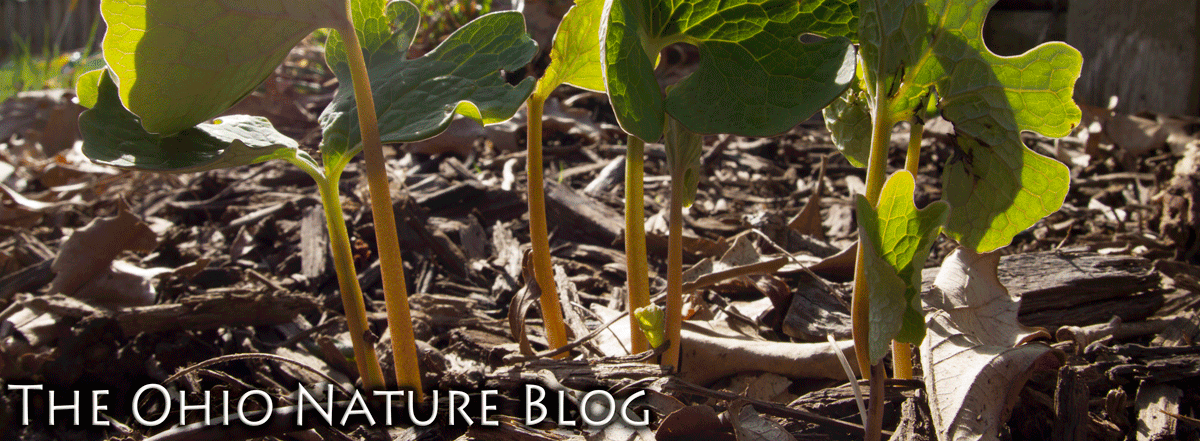I definitely have one of the greatest jobs available in the State of Ohio. I have had the opportunity to travel this summer to North Bass Island, in Lake Erie, three times this year. With my co-worker Rick Gardner, I'm working on a vegetation survey of the island for the Division of Parks. Here are a few of my shots from this past Monday-Tuesday trip.
We leave from Catawba State Park, where I can remember fishing when I was a teenager. There is a nice cobble limestone beach there which really looked great in the morning sun as we were waiting for our boat.

We arrived at the Island and were greeted by Dale Burris, and, well, grapes. Even though many of the vineyards have been removed, grapes are still a big presence on the island.

After saying goodbye to our hosts, we loaded up the utility vehicle and drove to the lodge. Here to greet us outside near the deck was a large Lake Erie watersnake.

But today was not all fun and games. We had some serious work to do. One of my goals was to find a chinquapin oak on the island, a limestone loving oak species, but we were not able to come up with one. There are very few oaks on the island, but there is this large red oak in the woods just to the south of the chapel.

Also in this woods grew
Smilax illonensis, or Illinois greenbrier. This plant has globular blue fruits that look like a little bit like grapes.

Next it was onto Honey Point, the southeast tip of the island. Here, waves come at the point from two directions.

Growing on the beach was seaside spurge, one of Ohio's potentially threatened plants. In Ohio, this plant is found only along the shoreline of Lake Erie. I usually see it in sandy situations, but here it was growing amongst the cobbles.

After our vegetation work was done for the evening, I had an opportunity to photograph insects in a nearby field. There were many interesting little creatures, including this pearl crescent whose color seemed washed out and faded.

Several other interesting insects were present, including a chickweed geometer, a colorful larval lepidopteran, thousands of grasshoppers, and even some female damselflies, possibly familiar bluets.





The sunset was fairly spectacular, and it cast amazing light on everything, including several Jerusalem artichokes and the back wall an abandoned house on the island.


Finally, the sun set, creating up more photo opportunities.


With no light left, I retreated to the lodge, watched a bit of Ontario television and learned about the Green Party in Canada, and was off to bed. We were treated to a spectacular sunrise the next morning.

Tom






























































